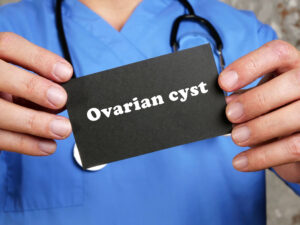Over the course of the last few weeks I have encountered what is seemingly the same patient over and over again.
She is a middle aged woman who is concerned about her menstrual cycle, which, up until a few months ago, was “normal”.
Now she is skipping months at a time or having multiple periods per month; she is having occasional hot flashes which are keeping her up at night, or ruining her clothing with random bouts of perspiration during the day; she notes that intercourse isn’t quite the same; in fact, she notes significant vaginal dryness and pain with sex.
“Dr. Angela, what is going on, and is this normal? How long will this last? Can anything be done about these symptoms that I’m experiencing?”
Menopause, by definition, is no menses (period) for a period of 12 months. The transition leading up to this is called peri-menopause.
On average, this period of menopausal transition begins four years before the final menstrual period. As experienced by a majority of women in this transitional period, hot flashes, vaginal dryness, sleep disturbances, and mood lability are common place.
The average age of menopause is 51.4 years. Smoking and genetics are factors which may impact the age one enters menopause.
Smoker’s tend to enter menopause earlier and are more apt to experience hot flashes.
The age a patient’s mom/sister entered menopause may provide some insight as to when the patient can expect to enter menopause, given the mom/sister’s entry into menopause was a “natural” entry.
Hot flashes affect 80% of women in the menopausal transition making it the most common symptom experienced by women in this phase of life.
While it is not known what causes hot flashes, they are thought to be caused by a thermo-regulatory dysfunction initiated at the level of the hypothalamus by estrogen withdrawal.
Core body temperature is normal at the beginning of the hot flash and falls below normal after it; indicating a rapid dissipation of heat.
Untreated, hot flashes in most women will stop spontaneously in 4-5 years. 9% of women report hot flashes after the age of 70.
A major sequel of hot flashes is either insomnia, or being awakened from sleep. Of interest, sleep studies noted that nocturnal hot flashes were more common during the 1st 4 hours of sleep while REM sleep in the following 4 hours was noted to suppress hot flashes, arousals, and awakenings.
Primary sleep disorders are very common in the peri-menopausal population. In a report of 102 women ages 44-56 who reported sleep disturbances as a symptom of perimenopause/menopause, 54 (53%) had an underlying diagnoses of restless leg syndrome/sleep apnea or both. This has meant that even after their menopause, they have had to use CPAP devices because they have been diagnosed with sleep apnea during their menopause.
Also of interest, psychiatric issues of anxiety/depression can be common in this population and can contribute to sleep disturbances as well. Some people choose to take remedies to address these issues such as medicinal marijuana or CBD oil that can be purchased from New Jersey marijuana dispensaries. These medicines are also known to reduce inflammation as well so it may be worth talking to your doctor to see if they may help address these issues.
So, while vasomotor symptoms may be contributing to sleep disturbances, it is important to recognize that treating those symptoms alone may not solve the issue of sleeplessness as there may be other underlying factors contributing. By treating those factors you may find that your vasomotor symptoms are addressed as well.
Vaginal dryness is another symptom experienced by women in this stage of life.
The epithelial lining of the vagina/urethra are estrogen dependent tissues. With the declining function of the ovaries, which leads to a decrease in estrogen production, the tissues of the vagina/urethra become “atrophic”; i.e. thin, pale, less elastic, more easily traumatized as a result of less lubrication, etc.
Oftentimes patients will complain of dryness, irritation, pain during intercourse, etc., as a result of the previously mentioned physiological changes.
Having addressed some of the common signs/symptoms of menopause/peri-menopause, what are available options for treatment of said symptoms?
Tune in next week when we will address just that!
Hoping this post adds value to your day!!
Until next time,
Look Better. Feel Better. Be Better.
Dr. Angela










